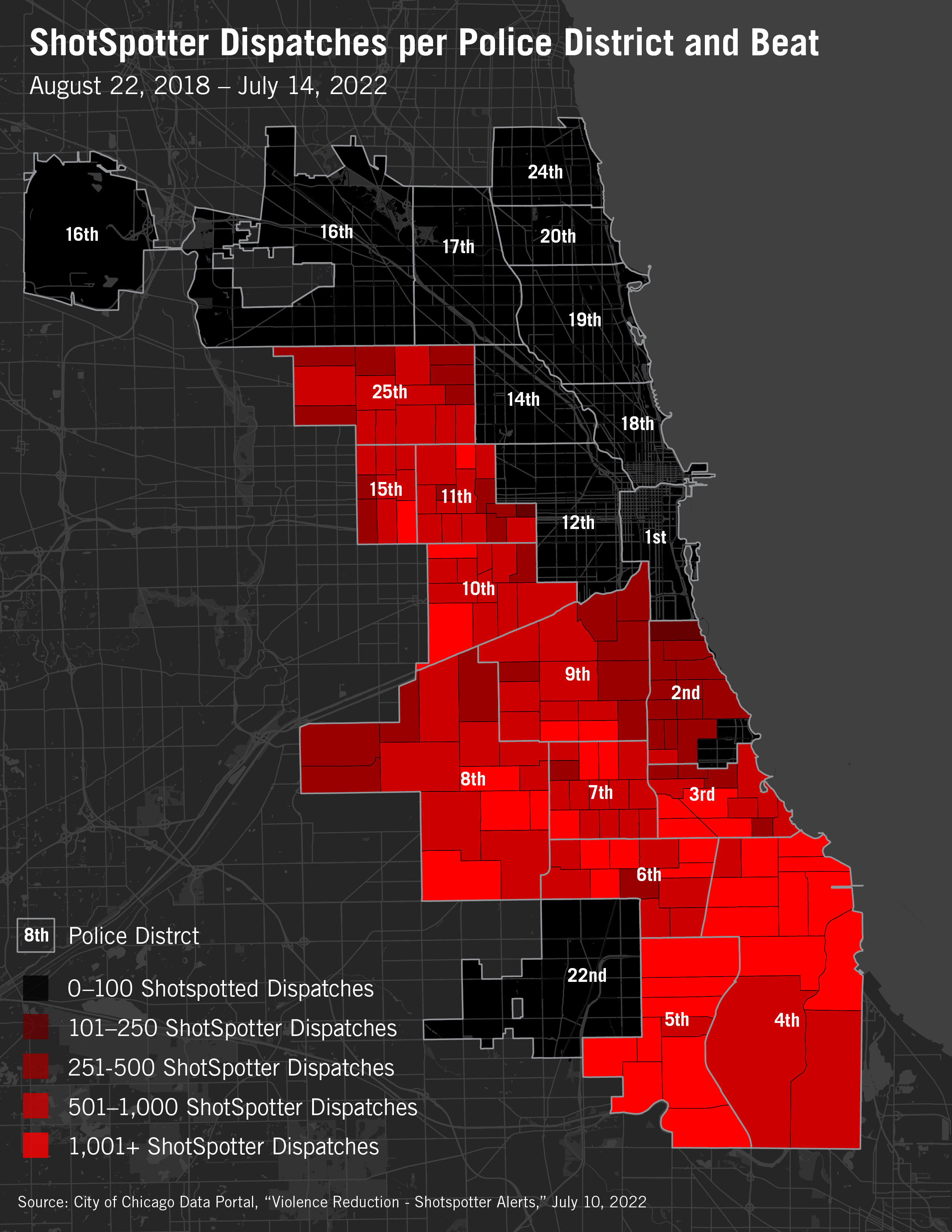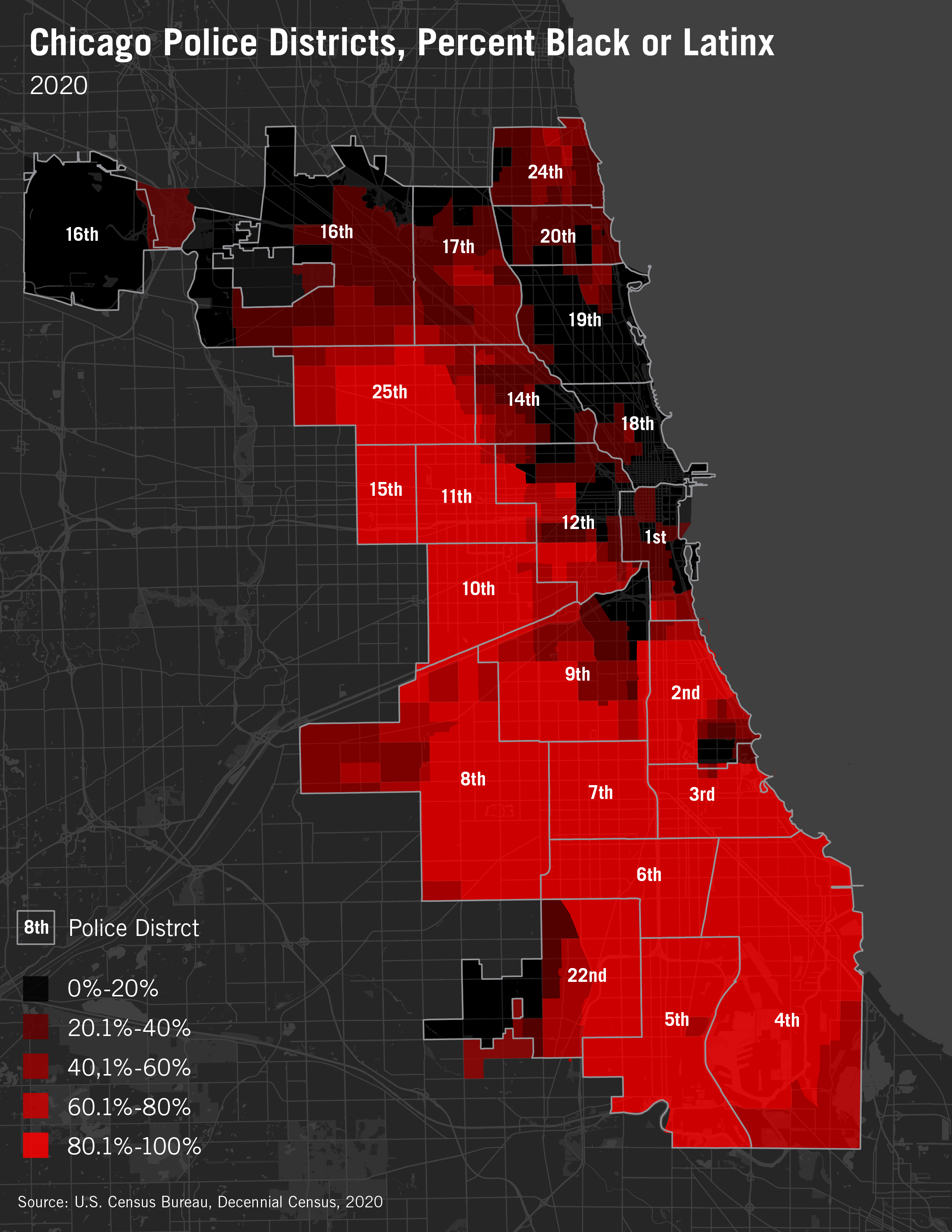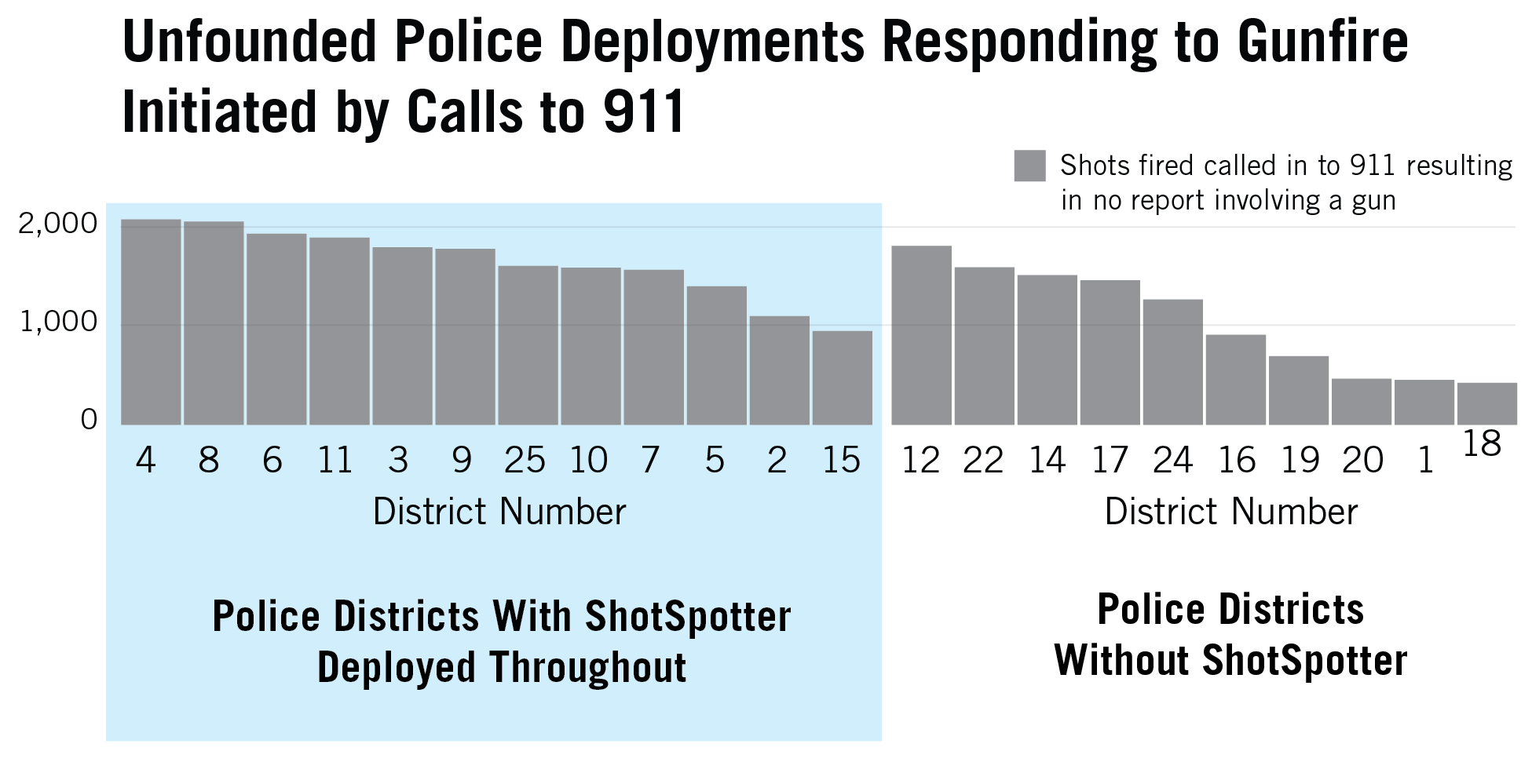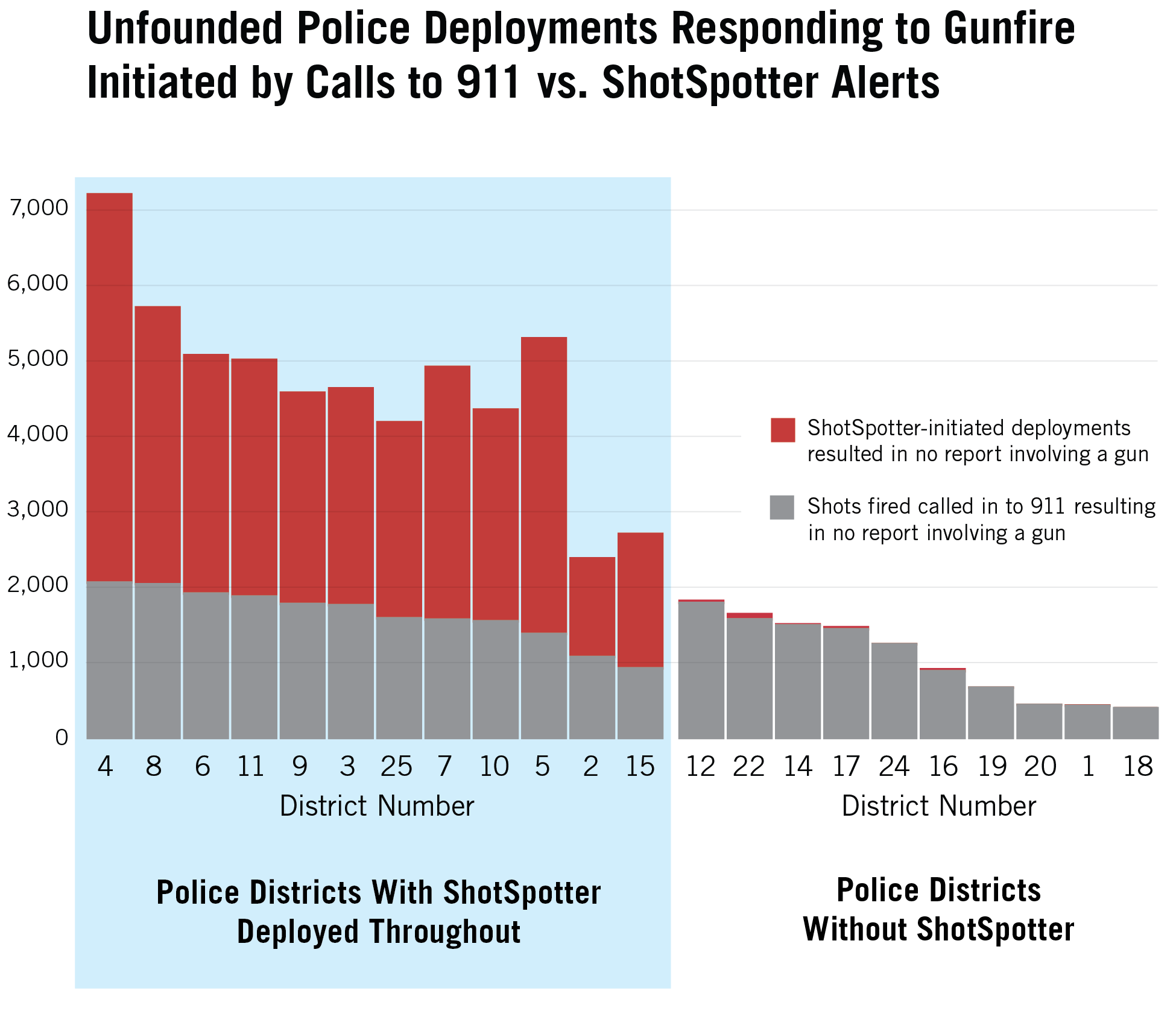Every unfounded ShotSpotter deployment creates an extremely dangerous situation for residents in the area. ShotSpotter primes police to believe that they are heading to a dangerous location where a person has just fired a gun. Any resident who happens to be in the vicinity of a ShotSpotter alert will be a target of police suspicion or worse. These volatile deployments can go wrong in an instant.
The Chicago Police Department has a long history of excessive force, illegal and discriminatory stop-and-frisk, and other abusive policies and practices. ShotSpotter is a tool and tactic that contributes to these problems. It exacerbates police bias towards marginalized communities and distrust and fear from residents.




